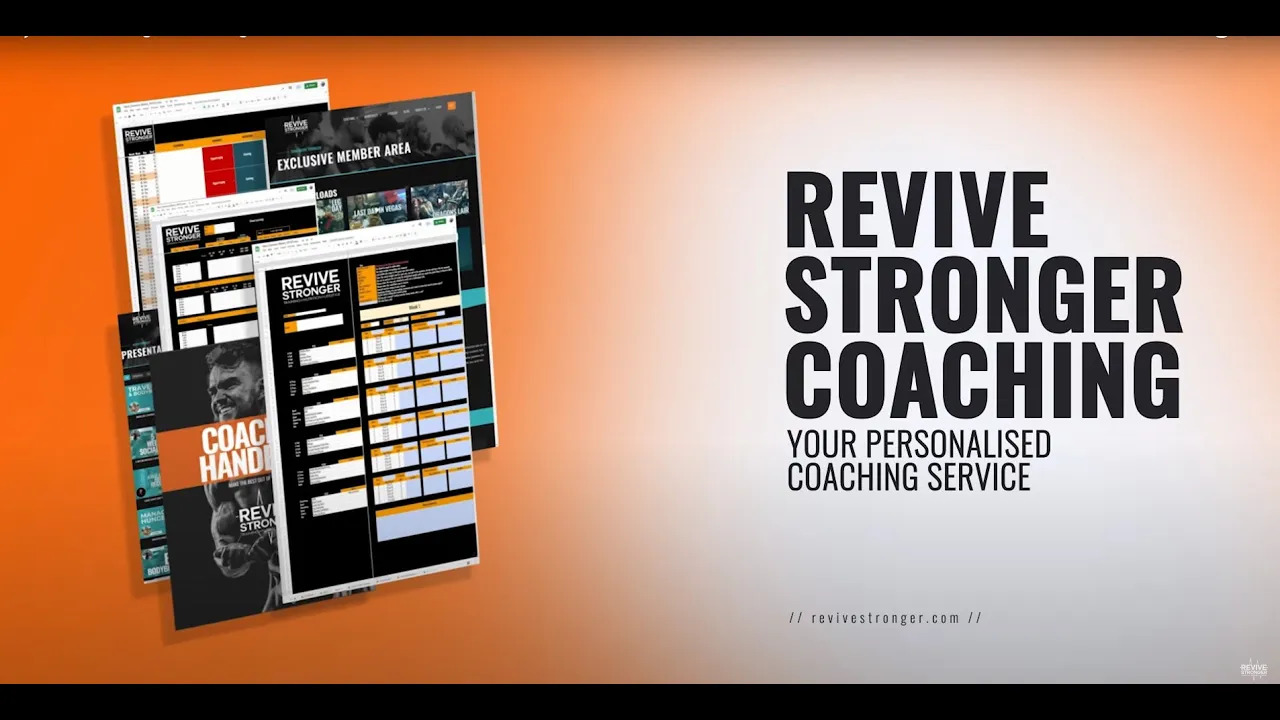
Revive Stronger
A Strong Case For Muscle Confusion

It has long been thought that we need to confuse our muscles to help them grow.
Switch it up.
The response nowadays is that this is baloney, rubbish and a bad idea.
I am going to argue today that when used right not only is Muscle Confusion good, but it is absolutely pivotal to progress.
Why We Need Muscle Confusion
Everyone knows that we need to lift heavy, this will then cause a stress and our body will adapt and grow stronger. This is called Stress, Response Adaption (SRA) and you can learn more about that in my article on periodisation. However, if you continue with the same exercise with the same volume and intensity over a long period of time, our gains decrease.
This is because our bodies get used to the stimulus, it is no longer enough to cause an adaption, we become accommodated to our training. Overtime our bodies adapt less and less to our exercise, this is called The Law of Diminishing Returns. In the beginning a small amount of training may lead to large gains, but the longer we’ve been exercising the more training we need to cause even the smallest gain. So squatting 5×5 using 80kg two times per week becomes increasingly less effective at providing us strength and size gains. If you thought differently you are pretty much insane because we all know:
[bctt tweet=”Insanity: doing the same thing over and over and expecting a different result.”]
Lets give an example; Peter started out squatting, benching and deadlifting three times a week following a 1×5 protocol. Straight off the bat he found he could increase his loads by 2.5 to 5kg every week. Peter wanted faster progression so he added an additional set, so he was now doing 2×5. Peter was very happy, now all his lifts increased by 5kg every week. However, Peter wanted more, so he went to 3×5, hoping he could increase his lifts by 7.5kg every week. Unfortunately Peter found his progression rate didn’t increase, he was still only able to add 5kg a week. This is because the law of diminishing returns set in after the 2nd set, although progression went up, it was a marginal increase from 2.5 to 5kg to always 5kg and then once the 3rd set was added progression slowed even further. Keeping everything else constant, in this example the progression gained by another set will eventually be smaller than the progress made initially by adding a set.
So you can see that we cannot go doing the same thing over and over again if we want to progress. Your training must vary. Our muscles get smarter, they slowly outwit all our attempts to get them bigger and stronger. This is where muscle confusion comes in, however I must note that I do not like the term. Also the way I am referring to it might not be how some intended it, but I am taking it to mean variation in training stimulus i.e. you change something whether it be the reps, intensity or exercise.
[bctt tweet=”Any idiot can train an idiot for a year – M.Siff”]
Basically initially anything will work for a new trainee, but the long-term improvement relies on considerable investment of effort in a variety of training approaches. Failure to change training for long periods of time as shown above leads to boredom, poor performance and little to no improvement. I have been there done that, got the t-shirt and it is why I produced Get Big, Stay Lean; a comprehensive guide to gaining lean muscle.
Why We Need DIRECTED Muscle Confusion
OK so we know that we’re insane if we think doing the same training over and over is going to drive results, and therefore we need to confuse our muscles again or rather vary our training stimulus. We have a number of options including:
- Vary our Modality/Exercise
- Vary our Load (total weight lifted)
So if you have stalled out squatting then you could change it to a single leg overhead paused pistol squat? No. OK so if you want to get stronger you could swap your 85% 3×3 bench press for a 50% 3×10 bench press? No. Right so if you want to grow your back changing your 4×10 body weight pull ups to a 3×3 weighted pull up would work? No.
What’s the problem? Surely they’re all ways to confuse your muscles?
This is why we need DIRECTED muscle confusion, without direction we won’t get the results we want. If we want to get stronger squatting, we need to make changes that still align with that goal.
[bctt tweet=”The way we train produces highly specific adaptions. “]
Going from a back squat to single leg overhead paused pistol squat isn’t a good idea. However, going from a back to a front squat is a sensible suggestion, it is varied enough to provide a new stimulus for adaption, but still specific enough to help enhance our squat. Furthermore, to optimise muscle growth we want to train with high volumes, if we switch from training at 75% of our 1 rep max to 85% we are no longer setting ourselves up to best grow muscle. You see 85% is so fatiguing that training volumes best suited to muscle growth are no longer sustainable.
Specific training trains the systems responsible for generating movement for the sport/goal in question. From the muscle groups used to the neuromuscular adaptations involved.
Training programmes should be both variable, to avoid accommodation, and stable, to satisfy the demand for specificity. How often do we need to confuse our muscles or vary our training? This wants to happen on a periodic basis, and you can learn more about that by reading Periodise for Progress.
Practical Application
Right so we know we need to change things now and then to keep our bodies adapting and progressing. However, we also know that the change needs to be directed, not just random. Also I might add that we don’t want to go trying to confuse our muscles every workout, or even every week. As said you do this periodically via a periodised training plan. Adaptions to a new training demand can take between 2 to 6 weeks to become fully manifested.
So let me give you some practical takeaways, so you can use Muscle Confusion to your advantage:
- The Delete & Replace Concept: every 4 to 5 weeks change your exercises, but keep them in the relms of specificity e.g. from a deadlift to a romanian deadlift, bench press to floor press, pull up to lat pull down etc.
- The Training Deload: every 4 to 5 weeks take a training deload, in which you slash volume by around 50%. For example if you were doing 5×5 @ 80% you could deload doing 2×3 @ 80%. You’ve trained hard weeks prior, this week you rest and grow. If you don’t need a deload, you have not been training hard enough.
- Planned Programme Hopping: generally speaking programme hopping is a bad idea, but so long as you have seen the entire programme through, and plan to go onto another programme, it can be a good thing e.g. you’ve been doing 531 by Jim Wendler for 6 months and therefore decide to try out PHAT by Layne Norton.
- Training in Blocks: you spend time working on one specific adaptation for a period of weeks to months before then switching to another, while implementing deloads and the delete & replace concept where appropriate. For example you followed 2 five week hypertrophy blocks changing exercises each block and taking a deload every 5th week, before moving onto a strength block.
- Using Extreme DUP: in contrast to training in blocks you don’t focus on one specific adaptation at a time, but each day of the week you focus on a different goal e.g. Monday hypertrophy training, Wednesday power and Friday strength. You could then put this together with deloads & the delete & replace concept and be set. Interested in using DUP, I have a free programme for you.
All the above are different ways to get round the Principle of Accommodation and allow you to keep progressing. You are essentially changing your training to allow time for your body to de-sensitise its effect on staleness.
Changing your training should not be random, that isn’t going to be a successful approach, each time you change your volume, intensity or the exercises it should be planned. If you can do that, then you will smash through any potential training plateaus and use muscle confusion the right way and this is pivotal to your progress.
References
- V, M Zatsiorsky. W, J, Kraemer. Science and Practice of Strength Training. 2006
- M, Israetel. J, Hoffmann. C, W, Smith. Scientific Principles of Strength Training. 2015
- MH, Stone. M, Stone. WA, Sands. Principles and Practice of Resistance Training. 2007
We are a personal coaching service that helps you achieve your goals. We want you to become the best version of yourself.









Comments are closed.